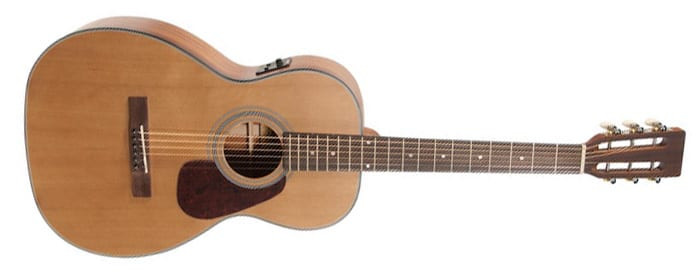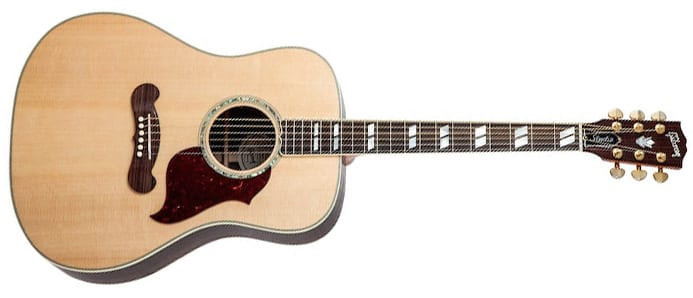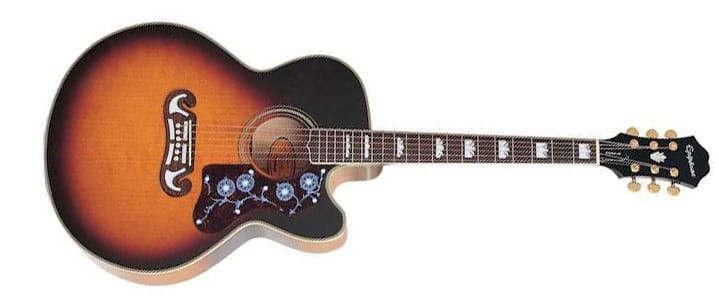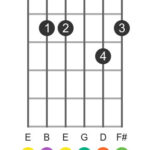Choosing the right guitar size is crucial for comfort and playability, whether you’re a budding musician or a seasoned strummer. Guitars come in a variety of sizes, from the petite ukulele to the booming jumbo, and understanding these differences is the first step in selecting your ideal instrument. This guide will walk you through the diverse world of guitar sizes, helping you find the perfect fit for your body and musical aspirations.
Exploring Different Guitar Sizes: From Ukuleles to Jumbos
Guitars aren’t a one-size-fits-all instrument. The dimensions and scale length significantly impact playability, sound, and overall experience. Let’s explore the common guitar sizes, starting from the smallest:
Ukulele: The Tiny Treble Maker
The ukulele, often called a “uke,” is the smallest member of the guitar family. Originating from Hawaii, it features four strings and a compact body.
Ukuleles are excellent for:
- Beginners with Small Hands: Children or adults with smaller hands often find the ukulele’s narrow neck and shorter scale length incredibly comfortable.
- Portability: Their small size makes ukuleles exceptionally easy to transport, perfect for travel or casual playing anywhere.
- Unique Sound: Ukes produce a bright, cheerful, and trebly tone, distinct from larger guitars.
However, it’s important to note that ukuleles are tuned differently than standard guitars, which might require a learning adjustment if you plan to transition to a full-sized guitar later.
Guitarlele: Bridging the Gap
The guitarlele (or kiku) is slightly larger than a ukulele but retains a compact size. It features six strings and offers a bridge between the ukulele and a standard guitar.
Guitarleles are advantageous because:
- Familiar Chord Shapes: You can use the same chord shapes as a standard guitar, making it a smooth transition for guitarists or those planning to learn guitar in the future.
- Portability with Versatility: It maintains the portability of a ukulele while offering the six-string versatility of a guitar.
Guitarleles are tuned higher than standard guitars, similar to a guitar with a capo on the 5th fret. While still trebly, they offer a slightly fuller sound compared to ukuleles.
Half-Size Guitar: Ideal for Young Beginners
The half-size guitar is, as the name suggests, approximately half the size of a full-scale guitar. This size is primarily designed for young children starting their guitar journey.
Half-size guitars are beneficial for:
- Children: Their smaller dimensions are perfectly scaled for young children who would struggle with larger guitars.
- Standard Tuning: Unlike ukuleles, half-size guitars are tuned to standard guitar pitch, facilitating easier transition to larger guitars later.
- Availability in Acoustic and Electric: Both acoustic and electric versions are available, offering choices for different musical styles.
As children grow, they will quickly outgrow a half-size guitar, typically around the age of 8, necessitating an upgrade to a larger size.
Three-Quarter Size Guitar: The Tween and Petite Adult Choice
Stepping up from the half-size, the three-quarter size guitar is an excellent option for children around 8-12 years old and even petite adults.
Three-quarter size guitars are popular because:
- Comfortable for Older Children and Petite Adults: They provide a more substantial feel than half-size guitars without being overwhelming in size.
- Versatility: Suitable for various genres and playing styles.
- Acoustic and Electric Options: Like half-size guitars, they are available in both acoustic and electric models.
While the length of three-quarter size electric and acoustic guitars is similar, electric models often have thinner bodies due to their different sound projection mechanisms.
Parlor Guitar: Compact Full-Size with a Vintage Vibe
The parlor guitar is the smallest of the “full-size” guitars. It’s a popular choice for players seeking a comfortable, smaller-bodied full-scale instrument.
 parlor guitar size
parlor guitar size
Parlor guitars excel in:
- Comfort and Playability: Players who find larger guitars bulky often appreciate the parlor’s smaller body, which sits comfortably and is easily accessible.
- Mid-Range Focused Tone: They produce a balanced tone with a strong mid-range presence, making them well-suited for fingerpicking and blues styles.
- Accessibility for Women: Many women find parlor guitars particularly comfortable and well-suited to their body size.
Auditorium Guitar: Balanced Tone and Comfortable Body
Auditorium guitars are larger than parlor guitars but feature a curvier and slightly thinner body compared to dreadnoughts, offering a comfortable balance of size and sound.
Auditorium guitars are favored for:
- Versatile Sound: They offer a balanced tone suitable for various playing styles, from strumming to fingerpicking.
- Comfortable Larger Body: The curvier shape makes them more comfortable to hold than dreadnoughts for some players, while still providing a fuller sound.
- Bassy Tone: They produce a deeper, bassier sound than smaller-bodied guitars due to their larger sound chamber.
Dreadnought Guitar: The Classic and Powerful Sound
The dreadnought is arguably the most iconic and popular acoustic guitar body shape. Known for its large, square shoulders and deep body, it delivers a powerful and resonant sound.
 dreadnought guitar size
dreadnought guitar size
Dreadnought guitars are renowned for:
- Big, Booming Sound: Their large body volume creates a loud, resonant sound with rich bass frequencies, ideal for genres like bluegrass, folk, and rock.
- Powerful Strumming: They handle strong strumming patterns exceptionally well, making them a favorite for rhythm guitarists.
- Classic Acoustic Guitar Tone: The dreadnought shape is synonymous with the traditional acoustic guitar sound.
However, their larger size can be cumbersome for smaller individuals or those seeking a more intimate sound.
Jumbo Guitar: The Biggest Acoustic with a Huge Tone
The jumbo is the largest of the acoustic guitar body shapes. True to its name, it boasts a large body that translates to a massive, warm tone.
 jumbo guitar size
jumbo guitar size
Jumbo guitars are characterized by:
- Enormous Sound: They produce the loudest and fullest acoustic tone, with rich bass and extended sustain.
- Warm and Resonant Tone: Jumbos deliver a warm, enveloping sound that fills a room.
- Visual Presence: Their large size makes a visual statement on stage.
The sheer size of a jumbo can be challenging for some players to handle comfortably, and they are less portable than smaller guitar sizes.
Full-Size Electric Guitar: Solid Body Versatility
Electric guitars differ significantly in construction from acoustic guitars. Full-size electric guitars have solid bodies and rely on pickups and amplifiers to produce sound. While body shapes vary greatly (e.g., Stratocaster, Les Paul, Telecaster), the overall “full-size” length is relatively consistent.
Full-size electric guitars offer:
- Versatility in Sound and Style: Electric guitars are incredibly versatile, capable of producing a vast spectrum of tones across all genres.
- Thinner Bodies: Generally, electric guitars have thinner bodies than acoustic guitars, making them feel more compact, even at full scale.
- Heavier Weight: Despite being thinner, electric guitars are often heavier due to their solid wood construction.
Size variations in electric guitars primarily come in half-size and three-quarter size versions for younger players.
Bass Guitar: Laying Down the Low End
Bass guitars, while technically guitars, occupy a different sonic space. They are larger and tuned lower than standard guitars, providing the foundational low-end frequencies in music. The Fender Precision Bass is a classic example of a full-size bass.
 bass guitar size
bass guitar size
Bass guitars are essential for:
- Foundation of Music: Bass guitars provide the rhythmic and harmonic foundation for most genres of music.
- Lower Frequencies: They produce deep, resonant low frequencies that underpin the overall sound.
- Size Variations Exist: Similar to guitars, bass guitars also come in half, three-quarter, and even ukulele bass sizes.
Finding Your Perfect Guitar Size: Consider These Factors
Choosing the right guitar size isn’t just about physical dimensions; it’s about finding an instrument that feels comfortable, inspires you to play, and suits your musical goals. Consider these factors when making your decision:
- Your Physical Size: Your height, arm length, and hand size are crucial considerations. Smaller individuals might find smaller guitar sizes more comfortable and easier to play.
- Age and Strength: Younger players or those with less physical strength may benefit from smaller, lighter guitars.
- Playing Style and Genre: Different guitar sizes are often associated with specific genres and playing styles. Consider the type of music you want to play.
- Comfort and Playability: The most important factor is how the guitar feels in your hands and against your body. A comfortable guitar is a guitar you’ll want to play more often.
- Sound Preference: Each guitar size produces a unique tonal character. Experiment and listen to different sizes to find the sound that resonates with you.
Ultimately, the best way to determine the right guitar size is to try out different models in person. Visit your local guitar store, hold different sizes, and see what feels most comfortable and inspiring. Using this guide and hands-on experience, you’ll be well-equipped to find your perfect guitar size and embark on a fulfilling musical journey.

